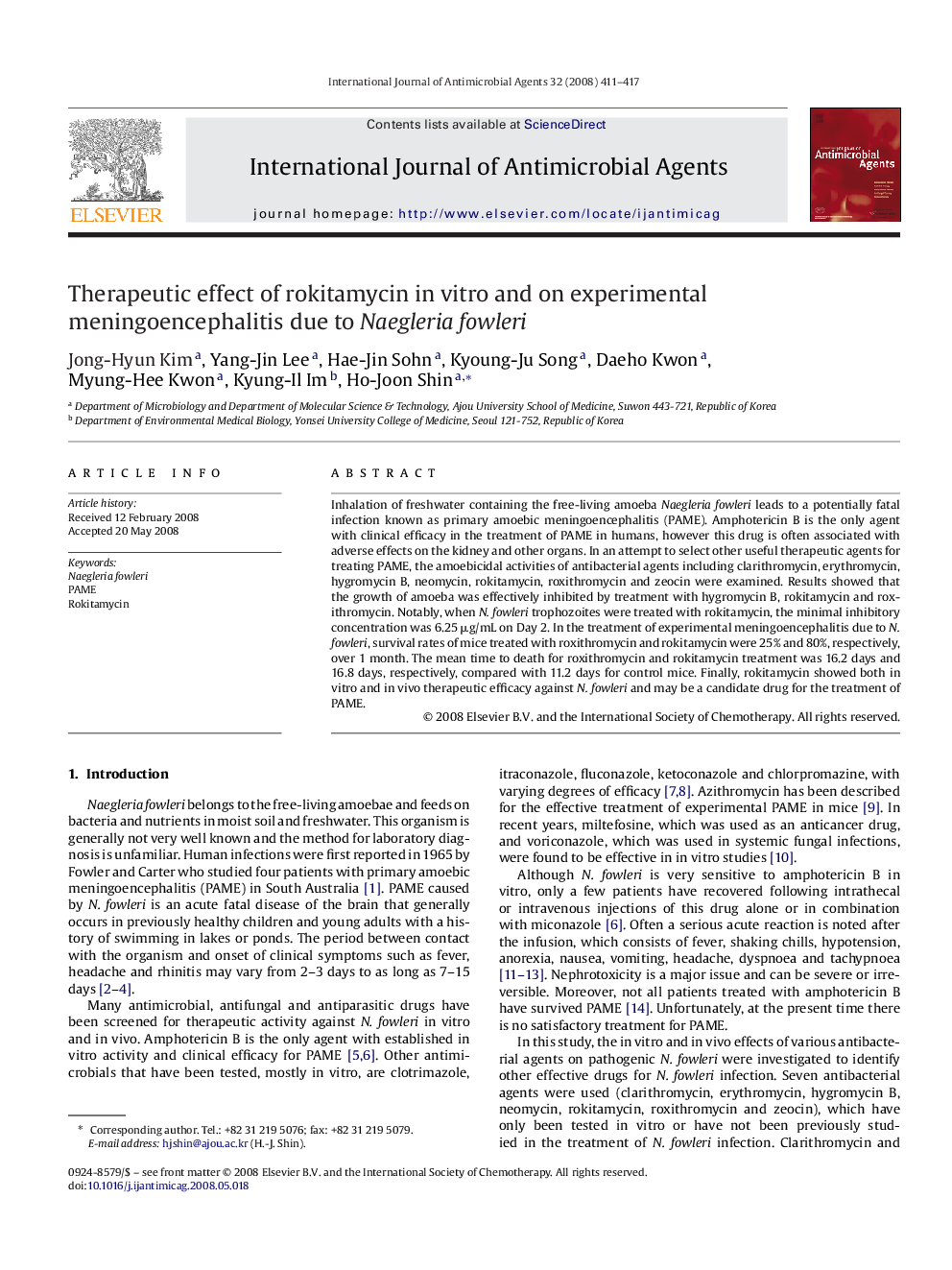| Article ID | Journal | Published Year | Pages | File Type |
|---|---|---|---|---|
| 3360697 | International Journal of Antimicrobial Agents | 2008 | 7 Pages |
Inhalation of freshwater containing the free-living amoeba Naegleria fowleri leads to a potentially fatal infection known as primary amoebic meningoencephalitis (PAME). Amphotericin B is the only agent with clinical efficacy in the treatment of PAME in humans, however this drug is often associated with adverse effects on the kidney and other organs. In an attempt to select other useful therapeutic agents for treating PAME, the amoebicidal activities of antibacterial agents including clarithromycin, erythromycin, hygromycin B, neomycin, rokitamycin, roxithromycin and zeocin were examined. Results showed that the growth of amoeba was effectively inhibited by treatment with hygromycin B, rokitamycin and roxithromycin. Notably, when N. fowleri trophozoites were treated with rokitamycin, the minimal inhibitory concentration was 6.25 μg/mL on Day 2. In the treatment of experimental meningoencephalitis due to N. fowleri, survival rates of mice treated with roxithromycin and rokitamycin were 25% and 80%, respectively, over 1 month. The mean time to death for roxithromycin and rokitamycin treatment was 16.2 days and 16.8 days, respectively, compared with 11.2 days for control mice. Finally, rokitamycin showed both in vitro and in vivo therapeutic efficacy against N. fowleri and may be a candidate drug for the treatment of PAME.
